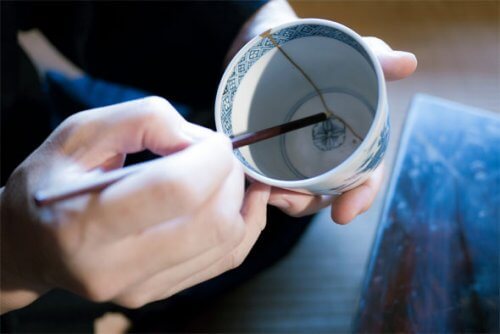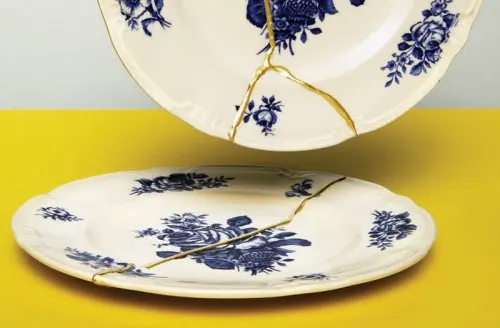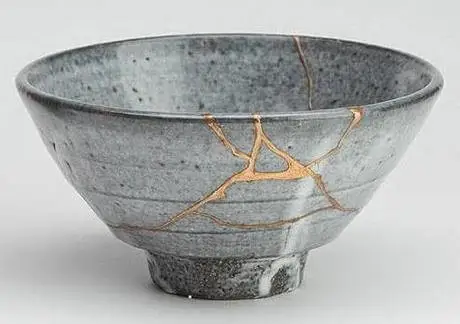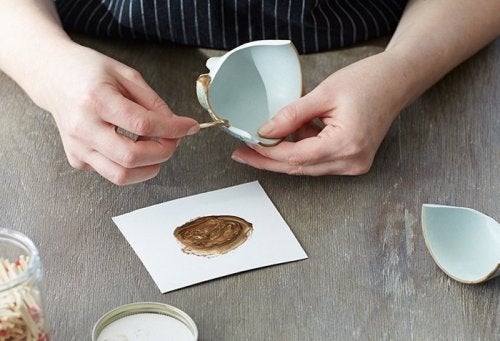How Broken Pottery Can Bring Us Healing


Written and verified by psychologist Valeria Sabater
Broken pottery is much like the shattered fragments of our lives.
It’s hard to put the pieces back together again, because we all feel like a broken cup or plate after the impact of the disappointment, loss or betrayal we experienced.
However, this broken object can get its beauty back if we know how to fix it properly.
Most of us would repair this bowl by using glue. However, the Japanese have long been practicing an art that, rather than just being a technique to fix pottery, is also a whole philosophy we can learn from.
We are talking here about kintsukuroi or “golden repair.” This is a wonderful strategy that we can use to create a new, more beautiful, and stronger object, reflecting a psychological dimension we all know about: resilience.
The art of repairing broken pottery

Maybe that piece from your tea set was broken when you were laughing with friends as you shared a moment of happiness.
Each crack in the porcelain refers to a moment in your life. However, throwing the pottery away is unnecessary. It would be like abandoning an injured animal, or like two romantic partners refusing to resolve an argument between themselves.
All this fits into the Japanese philosophy of kintsukuroi, a well-known technique around the world, which many people have learnt from.
Let’s take a closer look at this practice.
Read more: Overcome Your Pride and Ask for Forgiveness
The origin of kintsukuroi
To understand this special technique, we must travel back in time to the end of the fifteenth century, to the era of the shoguns.
Ashikaga Yoshimasa was the shogun that started this tradition. After his favorite teacups broke, he decided to send them to China to have them repaired.
Soon, the cups were returned to him with very noticeable traces of metal in them that diminished the beauty of the two pieces of pottery.
The shogun was very annoyed by the result, and asked the craftsmen to remedy it.
They did this by just sealing the broken pieces with a golden paste to create a different, more beautiful and more powerful object.
The shogun was delighted with the result.

How to use kintsukuroi on your broken porcelain
We’re sure that, by this point, you’re intrigued by the idea of the kintsukuroi technique.
If you’re curious, then you might like to try this technique with some cups or plates that may break at some point. It’s actually much simpler than you may think!
What you need
- Ceramic putty
- Synthetic gold powder (you can even use gold glitter)
- The broken piece of ceramic
- A spatula and/or toothpick
How to do it
- Start by mixing the ceramic putty with the synthetic gold powder. You can do it on a cardboard sheet, or on a specific bowl or cup. The amount you need will always depend on the parts you need to repair and put back together.
- Using a toothpick or spatula, apply this mixture on to the edges of the broken pieces.
- Then, join them and press down for a few moments.
- After this, you’ll see how the golden line edits the “scar” on the pottery, and that the wound now makes it into a much more beautiful, unique, object.
- Finally, you just have to let it dry for a few hours and then it’ll be ready.

The beauty is in the story the object tells, not the object itself
The kintsukuroi technique can be perfectly applied to our own life.
Resilience is like a mental tendon that acts almost like the golden putty that joins our broken pieces. It also inspires us to seal our wounds and, in turn, to learn from them.
We must stop being ashamed of the mistakes, failures or dreams that have faded. Instead, we must be able to see the beauty in the path we’ve taken in life that has somehow helped us to reach the maturity we have now.
We are wiser creatures who have learned to “shine” from adversity.
The broken pottery that has been repaired by the kintsukuroi technique also has another wonderful quality: it’s stronger. The cups and dishes no longer break so easily.
Also, people who are know how to be resilient and who have also sealed their wounds in gold are no longer as weak as before. This is something that we all, undoubtedly, learn over time.
All cited sources were thoroughly reviewed by our team to ensure their quality, reliability, currency, and validity. The bibliography of this article was considered reliable and of academic or scientific accuracy.
- Piña López Julio Alfonso. Un análisis crítico del concepto de resiliencia en psicología. Anal. Psicol. [Internet]. 2015 [consultado el 22 de julio de 2022]; 31(3): 751-758. Disponible en: http://scielo.isciii.es/scielo.php?script=sci_arttext&pid=S0212-97282015000300001&lng=es. https://dx.doi.org/10.6018/analesps.31.3.185631.
- Santini C. Kintsugi. El arte de la resiliencia. España: Libros Cúpula; 2019.
This text is provided for informational purposes only and does not replace consultation with a professional. If in doubt, consult your specialist.








